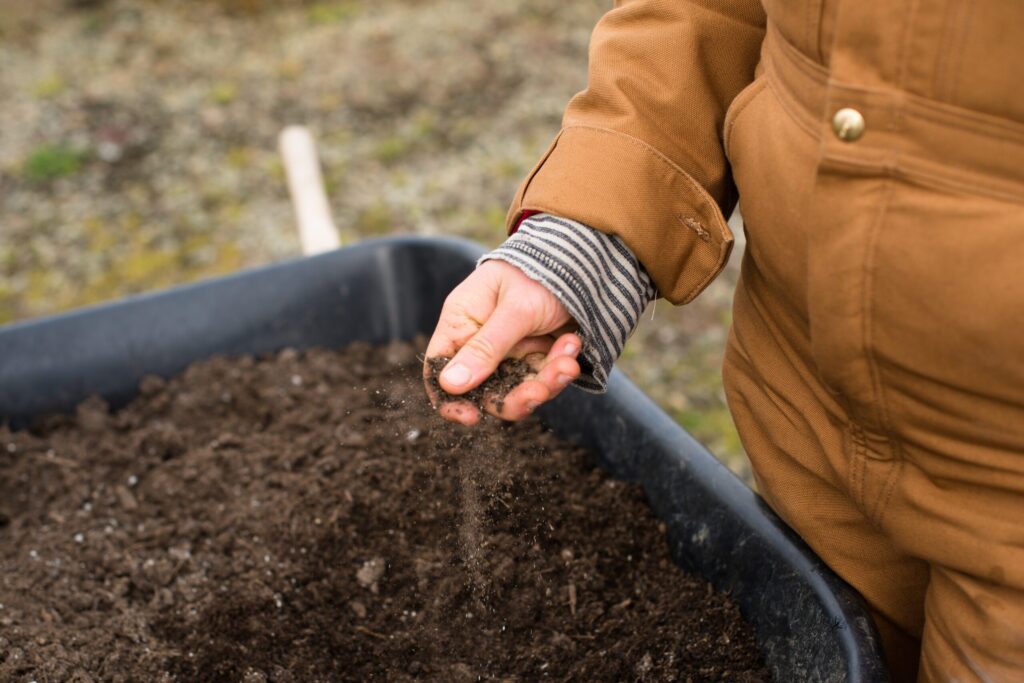Composting is not only a natural way to recycle organic waste—it is also a vital component in sustainable packaging and waste management. In this article, we examine the processes involved in degrading biodegradable products (such as compostable bags) and compare industrial composting with home composting. This detailed analysis is designed to inform potential customers about the nuances of each method and help them make sustainable choices.

Understanding the Composting Process
The degradation of biodegradable bags through composting involves several key steps:
- Material Selection
Biodegradable bags are typically made from materials like PLA (polylactic acid), PBAT (poly (adipic acid/butylene terephthalate)), starch-based polymers, or even calcium carbonate-modified compounds. These materials are engineered to be decomposed by microorganisms under specific composting conditions. - Composting Conditions
For optimal degradation, the following conditions must be met:- Temperature: 50–60 °C, to accelerate microbial activity.
- Humidity: 50–60%, to maintain a favorable environment.
- Oxygen: An aerobic environment is essential for promoting aerobic microbial decomposition.
- Microorganisms: A robust and diverse microbial community is required to break down the materials effectively.
- Degradation Process
The breakdown occurs in several stages:- Initial Stage: The bag begins to physically decompose in a high-temperature, high-humidity environment.
- Microbial Action: Microorganisms secrete enzymes that break down complex polymers into smaller molecules.
- Complete Degradation: Ultimately, the material is converted into carbon dioxide, water, and biomass with no harmful residues.
- Timeframe
Under industrial conditions, complete degradation generally takes several weeks to a few months, depending on factors such as material type, thickness, and specific composting parameters. - Home Composting
While some biodegradable bags can decompose in a home compost setup, the process is typically slower and more variable due to less controlled conditions. - Precautions
- Material Differentiation: Ensure that the bag is truly compostable and not ordinary plastic.
- Facility Requirements: Industrial composting relies on professional equipment and controlled environments, whereas home composting depends on natural conditions and simpler setups.

Comparing Industrial and Home Composting
The major differences between industrial and home composting can be seen across several critical aspects. The following table offers a clear, side-by-side comparison:
| Aspect | Industrial Composting | Home Composting |
|---|---|---|
| Scale and Concentration | Large-scale, centralized processing with specialized facilities and equipment | Small-scale, decentralized systems typically found in households |
| Environmental Control | Strict control of temperature, humidity, oxygen, and ventilation for rapid decomposition | Dependent on natural ambient conditions; less control over key parameters |
| Decomposition Speed | Rapid process; complete degradation often within a few weeks to a month | Slower process; may take several months or even a year to fully decompose |
| Material Acceptance | Capable of processing a broad range of materials including bioplastics, food waste, and animal manure | Best suited for plant-based waste; complex organic waste may not decompose effectively |
| Certification and Standards | Meets rigorous standards such as DIN EN 13432 (Europe) or AS4736 (Australia) | Often meets less stringent standards; certifications may include TÜV Austria OK Compost Home or DIN CERTCO Tested Garden Compostable |
| Application Scenarios | Primarily used for urban organic waste treatment, agriculture, and commercial fertilizer production | Mainly used in home gardens or small-scale projects to reduce household waste |
| Product Usage and Quality | Yields consistently high-quality compost ideal for commercial agriculture and landscaping | Compost quality can vary depending on environmental conditions and maintenance |

Why It Matters for Sustainable Packaging
For companies like hemcbags, which are dedicated to sustainable and certified compostable packaging, understanding these differences is essential. Products designed for industrial composting typically degrade quickly under controlled conditions. However, when these products are subjected to home composting, the breakdown process can be significantly slower.
This distinction is crucial to ensure that consumers choose products that align with their available waste management systems and sustainability goals. It also reinforces the importance of proper certification, helping to avoid greenwashing and build trust in eco-friendly products.

Conclusion
Both industrial and home composting play vital roles in organic waste management, but they differ significantly in scale, speed, material processing, and environmental control. Industrial composting is ideal for rapid, efficient degradation in centralized facilities, making it the preferred option for large-scale and commercial applications. In contrast, home composting is a practical and accessible method for households, though it may not always achieve the same level of consistency or speed.
At hemcbags, we strive to provide high-quality, certified compostable packaging that meets the demands of both industrial and home composting environments. By choosing products that are designed with these processes in mind, you can contribute to a greener, more sustainable future.
References for further reading:

